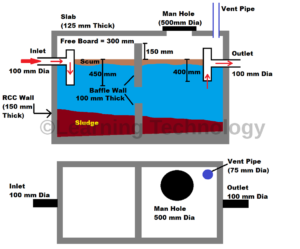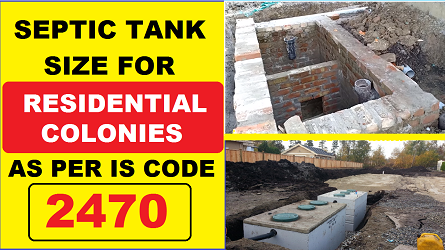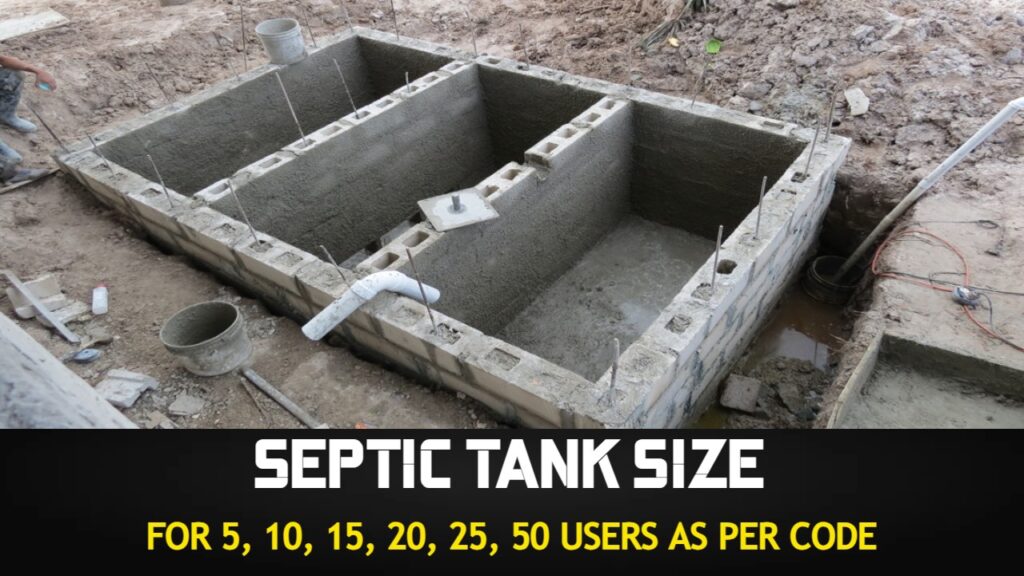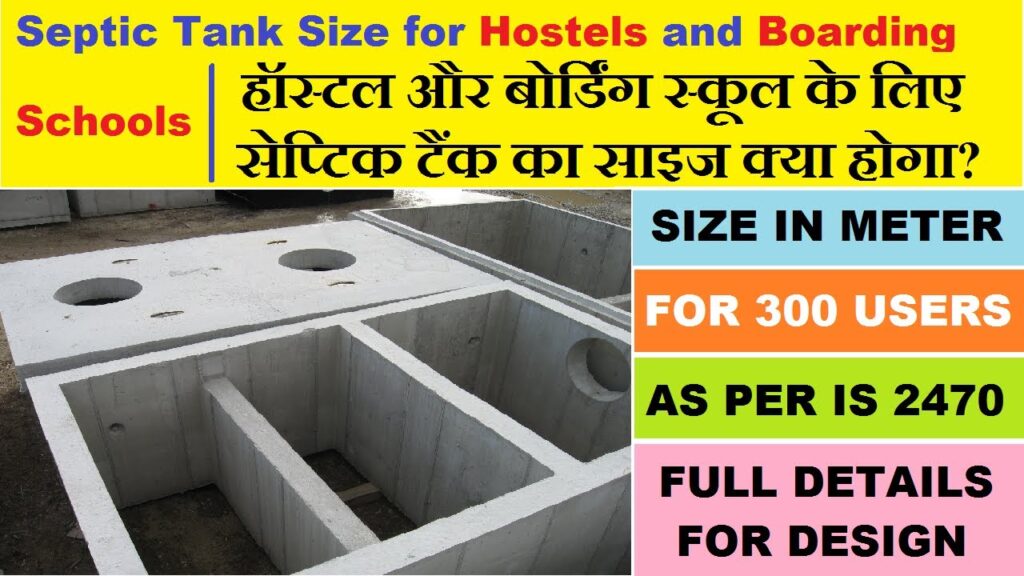The more important water is to our life, the more important it is to drain dirty water from the house. This drain of dirty water is very important at the time of building construction. There was a time when dirty water was washed by open drains and feces on a human head, but today all this work is done by ground drains and flush latrines which are very important for good health and pure environment. But even today, most villages and small towns of the village do not have sewerage systems. Septic Tanks Size for Residential Colonies as per IS 2470 (PART-1)
The residents of these villages and small towns meet the shortage of sewerage systems by making septic tanks in their homes and take advantage of every facility with the sewerage system.
Septic Tanks Size for Residential Colonies (Users up to 300) as per IS 2470 (PART-1)
|
No. of Users |
Length
(meter) |
Breadth
(meter) |
Liquid Depth in meter
(Cleaning Interval of) |
|
| 1 year |
2 year |
|||
|
50 |
7.0 | 2.00 | 1.0 |
1.24 |
|
100 |
7.5 | 2.65 | 1.0 | 1.24 |
|
150 |
10.0 | 3.00 | 1.0 |
1.24 |
| 200 | 12.0 | 3.30 | 1.0 |
1.24 |
| 300 | 15.0 | 4.40 | 1.0 |
1.24 |
NOTE 1 – A provision of 300 mm should be made for freeboard.
NOTE 2 – The sizes of the septic tank are based on certain assumptions ( check clause 3.4) while choosing the size of the septic tank, the exact calculation shall be made.
NOTE 3 – For population over 100, the tank may be divided into independent
parallel chambers for ease of maintenance and cleaning.

The septic tank is an important tank built below the ground of the RCC or brick wall. The roof of which is also made of RCC (Reinforced cement concrete). The septic tank is plastered with cement spices containing waterproof powder from the inside. In this, the stools of all the toilets latrine, etc. are collected by the sewerage drainage pipe which in the presence of anaerobic bacteria. Harmful and contaminated gases go into the atmosphere by air (vent) pipes, and liquids are pumped through a drainage pipe into a soakage pit or drain containing unwanted wastewater. Small particles of solid matter accumulate below the septic tank, which is cleaned after about two years. This whole process takes about 24 hours to complete. That is why it is important that the size of the septic tank should be like that the stool must remain in the tank for 24 hours to complete the chemical reaction. The septic tank should have a capacity of 350 liters per person and in any case, its capacity should not be less than 2000 liters. On top of this, a manhole is also made, whose size is 50 to 60 cm diameter when it is circular and 60 x 45 cm when it is rectangular so that there is no problem while cleaning.






